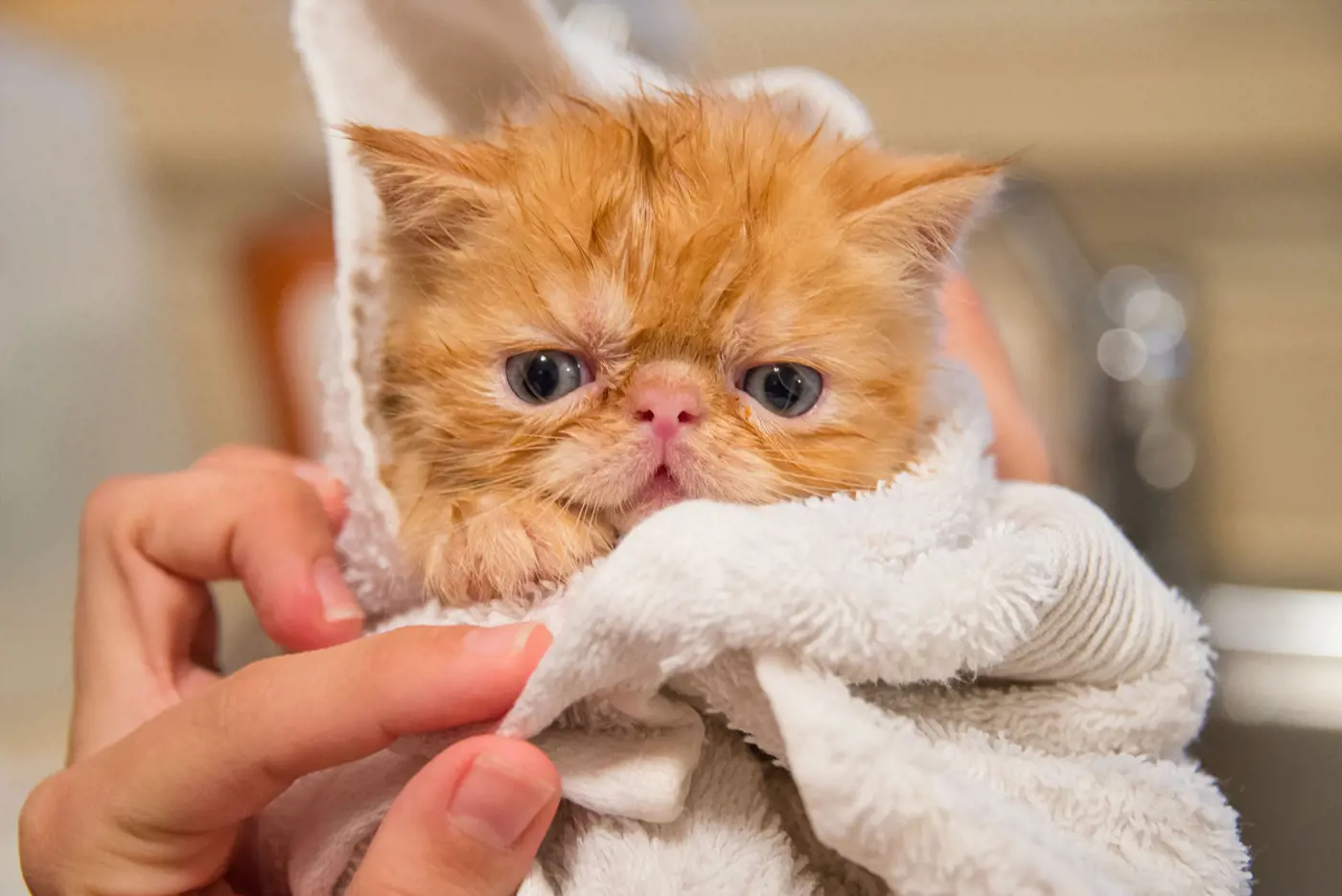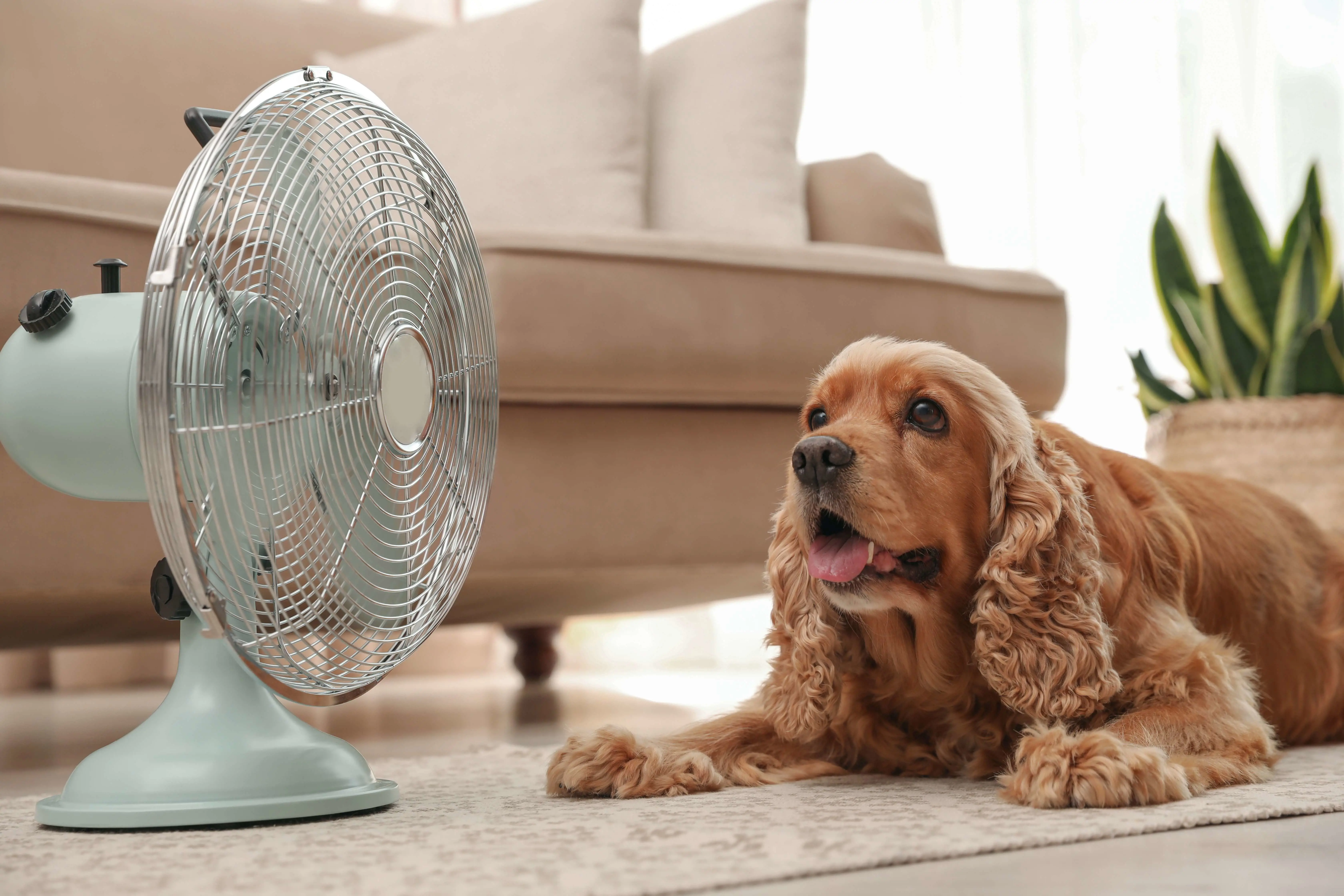Should you give your cat a bath?
17th June, 2020

Cats famously hate water. But occasionally, there’s no alternative to a quick dip to get your moggy clean or to treat a skin condition.
So how do you spare your feline’s feelings while also ensuring it’s in tip-top condition?
Bathing a cat is unlikely to be a fun or easy job, but it’s sometimes an essential part of caring for your kitty, along with choosing the right pet insurance. Read on for our quick how-to guide.
When might my cat need a bath?
Unlike their canine rivals, cats only need baths in exceptional circumstances. Most of the time, they’re only too happy to spend hours on their immaculate grooming routine.
But while your cat can clean off a fair amount of dust and dirt through self-grooming, that may not be sufficient if it’s rolled around in something sticky.
If your cat is long haired and has got something matted into its fur, then it’s definitely time for you to roll up your sleeves and prepare for bath time.
And sometimes, you might need to bathe your cat with medicated or anti-fungal shampoo to treat conditions such as fleas, bacterial skin conditions, or ringworm.
If you see your cat scratching, or spot signs such as patches of missing fur or scaly skin, visit your vet for diagnosis and treatment – pet insurance may help cover the costs of any treatment they need.

Getting prepared
With the exception of a few breeds such as Ragdolls, cats generally dislike water. Many of them won’t even drink the stuff!
So a bath is something of an ordeal – but with a bit of forethought, you should be able to minimise the distress to both your moggy and yourself.
The last thing you want is to be scrabbling for shampoo with one hand while clutching a struggling cat with the other. So be prepared!
It may be easiest to use a sink or a large bucket, so you don’t have to crouch down. If you do decide to use your bath, then put a non-slip mat in the tub.
Get all your grooming equipment laid out, ready to go. It should include shampoo that’s specially formulated for cats. You could use a cat conditioner, too, if your kitty’s coat is looking very tangled.
You’ll also need a brush for matted hair, and scissors or clippers in case you need to cut out any knots. A cloth to wipe your feline’s face is a good idea, and a jug is best for rinsing.
Make sure you’ve got an old towel to hand so you can dry your cat as quickly as possible after. And don’t forget to have some tasty treats ready to distract your pet and reward it once bath time is over.
It’s best to have a human helper on hand, too, so that one of you can hold your moggy and soothe it while the other deals with the dirt.
Bathing your cat
Fill the container with a few inches of water – not too much, as this can be alarming for an anxious cat. The water should be warm rather than hot.
Now is the moment of truth. Pick up your pet and lift it into the water, holding it gently but firmly and making reassuring noises as you do so. Most cats will struggle somewhat, so act as quickly as you can.
Rub in warm water and shampoo to the affected area and lather it up as you would your own hair. If your cat needs a full body bath, you might want to wet its fur then lift it out onto the floor to lather up the shampoo.
Don’t splash water on your cat’s face or in its ears. If necessary, use a damp cloth on its face. Don’t put cotton wool or similar in your moggy’s ears to keep them dry, as it could get stuck.
If using medicated shampoo, follow the instructions – you may need to leave it on for a few moments.
Then place your cat back in the container, and use one hand to cover its face, and the other to douse its fur with water from the jug or shower.
Make sure you rinse it well, as your cat will undoubtedly want to lick its fur afterwards.
Finally, let your cat shake off the excess water and give it a treat. What a purr-fect puss!

After the bath
At last, it’s snuggle time! Wrap your cat in a towel and rub it dry, while praising it for its patience.
Don’t let your cat outside until it’s properly dry, otherwise it could get cold.
If you have other felines in your home, take care as they may be unsettled by the change in scent of their shampooed friend.
Separate them for a while if necessary – your kitty will soon start smelling like its old self again.
Using a pet grooming service
If your pet panics and you can’t stop it from biting or scratching you, stop the bath and seek advice from a vet – if you’ve got pet insurance from Purely Pets, our 24-Hour Vet Helpline is ideal.
The vet may well advise you to get your cat bathed by a professional pet groomer.
These experts are well used to dealing with angry moggies, and have all sorts of tips and tricks up their sleeves for keeping your cat calm during its bath time.
Many even operate mobile services that can come to your home – a great way to reduce your cat’s stress levels.
Get a quote from Purely Pets today
Caring for a cat is not always an easy task. Fortunately, Purely Pets loves moggies as much as you do, and offers 15 cover levels of lifetime pet insurance to take some of the strain out of cat ownership.
Depending on the level you choose, vet fees from £1,000 to £15,000 per year are included, with the excess as low as £60.
Complementary treatment and special diets are also covered, to suit your puss’s personal requirements.
Get a quote from Purely Pets today to help keep your cat in perfect condition.
Helpful Pages
Recent Posts
Pet Insurance Quote
- 98% claims paid *
- Claims paid directly to vets
- 24/7 vet video consultations
- Interest free monthly payments




